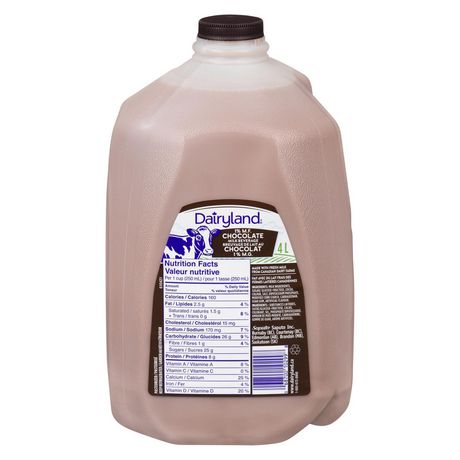

None of them were tempered, due to lack of equipment. Just to remind you, I did an even 25% ratio of the milk powders to the other ingredients, so in the end my chocolates have vastly different fat percentages, with the non-fat milk one having 6.25% less total fat than the goat’s milk, though all of them were still edible.
#Chocolate skim milk full
The goat’s milk is a full cream at about 25% fat, the buttermilk is unexpectedly lower in fat at 15%, and the non-fat milk is self-explanatory. I tested each powder based on the range of fat percentage in them, my previous experience with chocolates made with each type of powder, as well as my expectations regarding how they would affect flavor. My chocolates were all made with the end game of a 50% milk chocolate, and I used plain white granulated sugar, lightly-roasted Peruvian cacao, and Ecuadorian cacao butter, in addition to the three milk powders of choice. It’s also the reason why sugar is generally favored over honeys and other high-water content sweeteners. This is called “scaring” or “seizing” the chocolate.

In addition, if you’ve ever tried to make hot chocolate with real chocolate, you know that once you add a liquid to melted chocolate, it seizes up and gets clumpy. Although milk powders have different percentages of fat, the extremely minimal water content in all of them is the same, and one has only to adjust the recipe based on this fat content. Now some of you may be asking: why milk powder? Why don’t you just use regular milk? That’s where we get into the water content of milk and the lack thereof in milk chocolates. All rights reserved.My coffee/cacao roaster, with some green coffee beans awaiting a roast. The findings of this study demonstrate consumer acceptance of reduced-sugar chocolate milk and a possible way to use lactose hydrolysis in dairy beverages.Ĭhocolate milk lactose hydrolysis power function sugar reduction.Ĭopyright © 2015 American Dairy Science Association. Lactose hydrolysis of added lactose was used to achieve the sweetness of sucrose in chocolate milk but required >7.5% (wt/vol) added lactose, which contributed undesirable calories, indicating that lactose hydrolysis may be more suitable for other dairy beverages that require less added sugar. Acceptability results demonstrated that sugar reduction in chocolate milk is possible for both young adults and children as long as it does not exceed a 30% reduction (from 205 mM). The acceptability of sugar reduction from the benchmark concentration for both young adults and children and the acceptability of lactose hydrolyzed chocolate milk (4☌ for 24 h) with added lactose for young adults were evaluated. Threshold and power function studies were used to determine the benchmark concentration of sucrose in chocolate milk. The objectives of this study were to identify the different sweetness intensity perceptions of sucrose in water and various dairy matrices, to identify the acceptable reduction in sweet taste for chocolate milk for both young adults (19-35 yr) and children (5-13 yr), and to determine if lactose hydrolysis is a viable alternative. It is also important to investigate other natural alternatives to sweetening. It is important to reduce the sugar content of chocolate milk and still maintain acceptability among consumers. However, the high sugar content of chocolate milk is a cause for concern about its healthfulness, resulting in its removal from some school lunch programs.

Chocolate milk can improve milk consumption, especially by children, due to its color and taste. Milk consumption by Americans has not met the standards of the Dietary Guidelines for Americans.


 0 kommentar(er)
0 kommentar(er)
